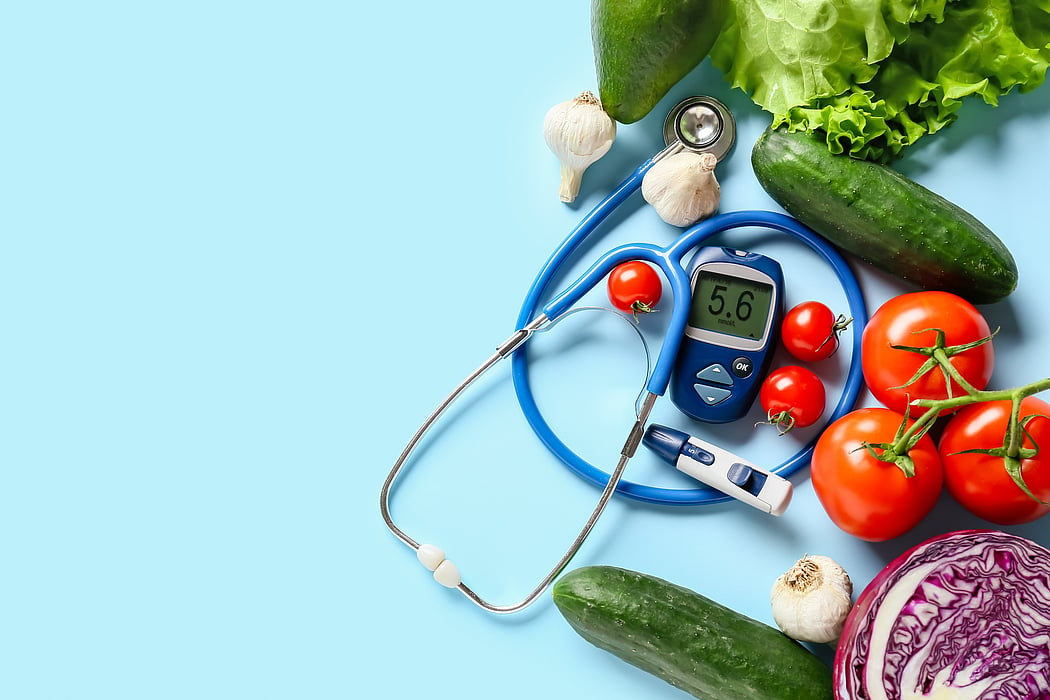Diabetes Symptoms Vary by Type: Here’s How to Tell the Difference

More than 11% of the U.S. population has diabetes, according to the American Diabetes Association, but as common as this disease is, many people don't realize that it is also the nation's seventh-leading cause of death. That’s why understanding its symptoms is essential to your health and overall vitality.
Understanding the symptoms of diabetes
Diabetes is a chronic health condition that interferes with the body's ability to change food into energy, according to the U.S. Centers for Disease Control and Prevention. When you eat, food is broken down into sugar (glucose), which enters the bloodstream. In response, the pancreas releases insulin, which allows the sugar to enter body's cells for energy.
In diabetes, however, the body either doesn't produce enough insulin, or the cells become resistant to its effects. Left untreated, diabetes can lead to serious health consequences such as stroke, heart disease, nerve and kidney damage, vision loss and more.
Signs of diabetes by type
“Individuals can have different experiences, but common symptoms include urinating often, feeling thirsty, feeling very hungry even after eating, extreme fatigue, blurry vision, weight loss and slow-healing cuts,” said Patricia Abernathy, a certified diabetes care and education specialist at Saint Anthony Hospital in Chicago.
But symptoms of diabetes can vary based on the type of diabetes you have.
Prediabetes symptoms
Prediabetes is a serious health condition in which blood sugar levels are higher than normal, but not yet high enough to be diagnosed as diabetes, according to the CDC.
Though prediabetes usually has no signs or symptoms, people who have it may notice darkened skin on certain body parts, according to the Mayo Clinic. The most commonly affected areas include the neck, armpits and groin.
"Prediabetes blood glucose levels fall in a lower range than diabetes, so it is a good time for a person to develop healthy lifestyle behaviors to learn how to keep their blood glucose in a healthy range to prevent further progression to diabetes,” Abernathy said.
Type 1 diabetes symptoms
Type 1 diabetes, once known as insulin-dependent or juvenile diabetes, is a form of diabetes that typically emerges in children, teens and young adults, although it can occur at any age. It is less prevalent than type 2 diabetes, according to the CDC, accounting for about 5% to 10% of all diabetes cases. Unfortunately, there is no known way to prevent type 1 diabetes.
The American Diabetes Association notes that the common signs of type 1 diabetes are:
- Urinating frequently
- Frequent thirst
- Frequent hunger -- even though you are eating
- Blurry vision
- Extreme fatigue
- Slow-healing cuts and bruises
- Unexplained weight loss
Type 2 diabetes symptoms
Type 2 diabetes arises due to impaired regulation and utilization of sugar as a body energy source, the Mayo Clinic says. This leads to excess sugar in the bloodstream, eventually leading to complications affecting the circulatory, nervous and immune systems.
Development of type 2 diabetes primarily involves two main issues. First, the pancreas fails to produce sufficient insulin, a hormone responsible for regulating the entry of sugar into cells. Second, the cells respond poorly to insulin, resulting in decreased sugar absorption.
Formerly referred to as adult-onset diabetes, type 2 diabetes significantly impacts an individual's overall health.
Type 2 diabetes symptoms develop slowly and can include one or more of the following:
- Urinating frequently
- Frequent thirst
- Increased or frequent hunger
- Unintended weight loss
- Blurred vision
- Slow-healing sores or frequent infections
- Fatigue
- Tingling or numbness in the hands or feet
- Darkened skin, most commonly in the armpits or on the neck
Gestational diabetes symptoms
This form of diabetes affects pregnant women.
"Gestational diabetes is diagnosed in the second or third trimester during pregnancy for a person who did not have diabetes before the pregnancy and is related to the pregnancy,” Abernathy said. It arises from hormone shifts and the process by which the body converts food into energy.
Hormonal changes can disturb the normal functioning of insulin during pregnancy, the Cleveland Clinic explains. It may fail to regulate blood sugar levels effectively, leading to the development of gestational diabetes. Genetic factors and being overweight (having a BMI greater than 25) may also contribute. (BMI is a measure of body fat based on height and weight.)
Gestational diabetes doesn’t typically cause symptoms. But some pregnant women with it experience:
- Frequent urination
- Nausea
- Thirst
- Tiredness
Pay attention to the signs of diabetes
Recognizing the signs of diabetes and promptly informing your health care provider is vital for early diagnosis and effective management. Understanding the symptoms allows for timely intervention and can prevent serious complications.
Be aware that type 2 diabetes is largely preventable through simple lifestyle measures such as maintaining a healthy weight, engaging in regular physical activity, adopting a nutritious diet and avoiding smoking, according to Harvard Health. These proactive steps can significantly reduce your type 2 diabetes risk of and protect your overall health.
SOURCE: Patricia Abernathy, MS, MSW, RDN, LDN, LSW, certified diabetes care and education specialist, Saint Anthony Hospital, Chicago
Related Posts
Small Increase in Lymphoma Risk Seen With Crohn Disease, Ulcerative Colitis
WEDNESDAY, May 10, 2023 (HealthDay News) -- Crohn disease (CD) and ulcerative...
¿Qué es la viruela del mono? ¿Deben los estadounidenses preocuparse?
LUNES, 23 de mayo de 2022 (HealthDay News) -- Un preocupante brote internacional...
Dirty Air & Lung Cancer: Detroit Study Shows How Your Neighborhood Matters
TUESDAY, May 9, 2023 (HealthDay News) -- Does where you live affect your risk...
Fatal Drug Overdoses More Common in Men
THURSDAY, June 15, 2023 (HealthDay News) -- Men are more likely to have a fatal...
